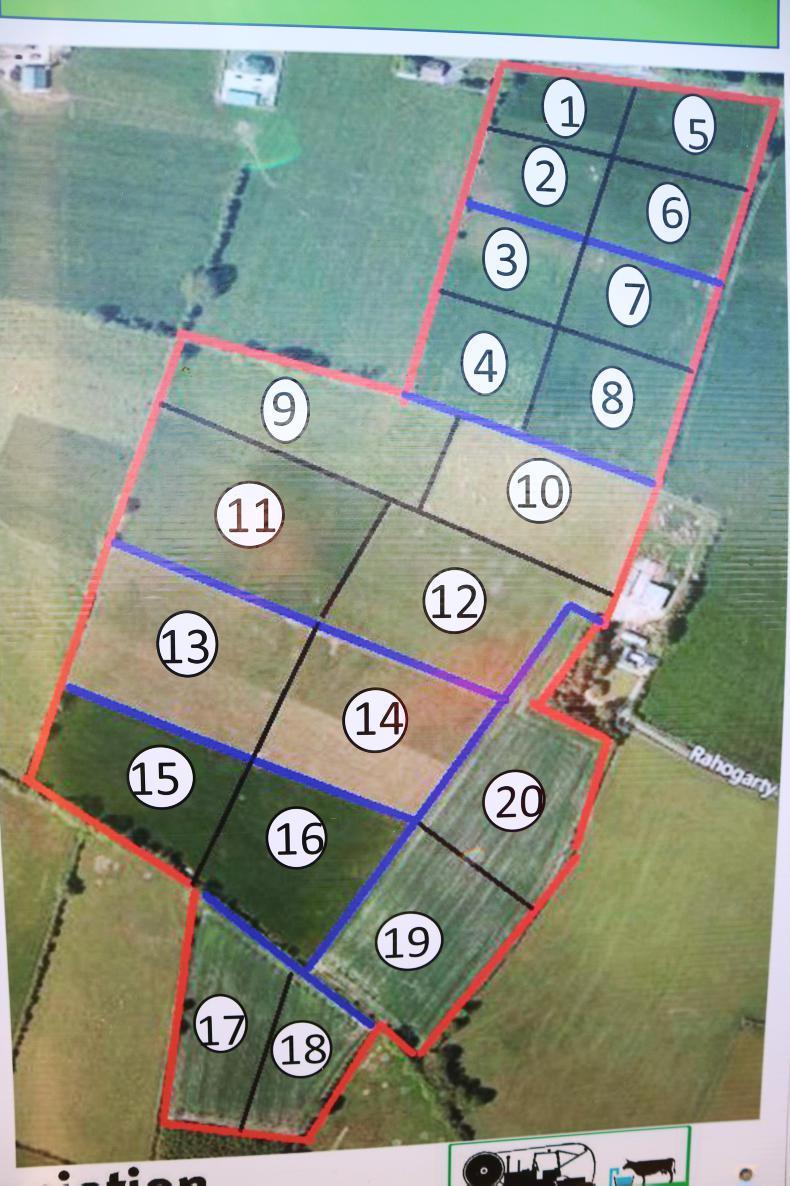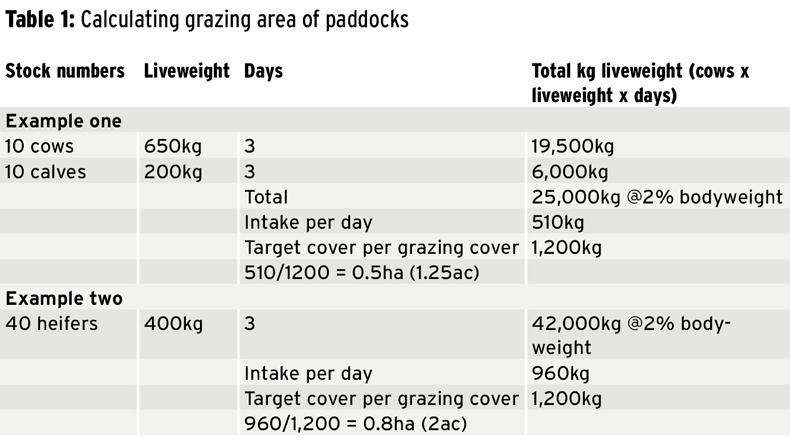The Irish Grassland Association (IGA) held a grazing infrastructure event on the farm of Billy Gilmore, in Tuam, Co Galway, on 25 April.
The focus on the day was on setting up an efficient grazing system for beef and sheep farmers that did not require massive investment. “Grazing infrastructure doesn’t have to cost the earth,” according to Catherine Egan from Teagasc, who was speaking on setting up paddocks on the day. “It can be done in a cheap and efficient manner.”
Both sheep and cattle are kept on the farm so it had to be set up to allow for paddocks to be split to cater for both groups of stock. Fencing the entire farm with sheep wire can be an expensive option so, instead, the decision was taken to use electric fencing. While a mains fencer is the preferred and reliable source of power there are many battery- and solar-powered fencers that are more than capable of doing large areas with ease which can be particularly useful for farmers with fragmented land.

The 40ac parcel is split into seven permanent divisions.
Big changes
Billy traditionally operated a mixed farming enterprise, with sucklers and sheep kept on the farm. However, big changes happened on the farm in 2009 when he dropped 48ac of rented land. Two years ago, he made another big change, moving from sucklers to contract-rearing heifers. These changes saw the farm move from a stocking rate of 1.22LU/ha in 2009 to 2LU/ha today, with total farm output at the same level in 2017 as it was in 2009 – on 48ac less. Output on the farm is approximately 41,000kg of liveweight per year.
“I would never be afraid of change. This system will suit a part-time farmer down the line more than sucklers would,” says Billy, who has recently entered into a partnership with his son Martin.
The farm comprises 137ac with 39ac owned and the rest rented. The walk was held on one of Billy’s larger blocks of land, a 40ac parcel. Billy originally began by splitting the field into three large paddocks but over time this has developed with the parcel divided into seven permanent fields with the potential to divide this into 20 temporary paddocks with the use of temporary fencing.
“This field used to be run as one large block. I started by dividing it into three blocks and it has just moved on since then,” according to Billy. “It’s not about doing the whole farm in the one year. It doesn’t have to be fancy, you can make it as simple as possible for yourself with strip grazing.”
In the centre of the larger paddocks is one centre post, from which temporary fencing will be set up. Billy uses this system to split the larger paddocks into four.

It can then be further subdivided into 20 temporary paddocks.
“It only costs about 40c/m for the fencing to split a paddock for cattle” according to Catherine, when using pigtails and electric fencing.
Throughout the day, Catherine got a lot of questions on how to calculate the size of the paddocks required for different groups.
“Don’t get too caught up on paddock size,” was one piece of advice that she had for farmers. “The first step is to actually split paddocks and then if you want to do more after that you can. In general, cattle will graze 2% of their liveweight so we use this to calculate the size of the paddocks required.
“If you have 40 suckler cows and their calves, you want to have approximately 5ac paddocks whereas for 50 yearling heifers 2.5ac paddocks would suit. For each grazing group you want to have seven to eight paddocks.
The aim should be to grow it in three weeks and graze it in three days.” Examples of how to calculate paddock size requirements for different groups of stock can be seen in Table 1.

While for many dairy farmers paddocks are standard, there are still a lot of beef farmers operating set stocking and even splitting larger fields in two with a reel of electric fencing is a start, with many advantages outlined by Catherine.
“You will increase the quality of the sward and the amount of the grass grown on the farm by putting in paddocks, which will lead to an increase in liveweight gain from your cattle,” according to Catherine.

Sheep netting comes in at a cost of €1.90/m including VAT.
Sheep fencing
For many farmers operating a mixed grazing enterprise with both sheep and cattle kept on the farm, they will often avoid implementing a paddock system due to the perceived high costs. One of the stands on the day highlighted the different options that exist when it comes to temporary sheep fencing with the costs ranging from €1/m for a simple system rising to €2.90/m including VAT for the ‘‘Rolls Royce’’ Gallagher Smart Fence option, Catherine said. The other three options include electrified sheep netting, which costs approximately €1.90/m including VAT. The netting can come in 50m lengths which could require several rolls to split a large paddock.
Cheaper options include using pigtails and polywire which cost approximately €1.20/m including VAT and PVC posts and polywire fencing which can vary from €1/m to €1.50/m including VAT. One advantage of the pigtails over the PVC posts is that they are more robust and will generally have a longer life as PVC posts can become brittle with age. “One thing I would say is to get a long enough reel that you can go over and back the field especially when you are putting in two or more strands for sheep,” Billy said. “Get a good geared reel that could cost around €50 and you won’t regret it.” Reels can generally range from €14 for the more basic model to €60 for geared options.






 This is a subscriber-only article
This is a subscriber-only article

















SHARING OPTIONS: